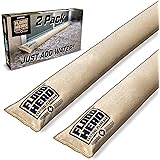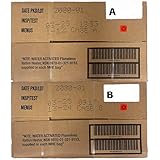Essential Supplies for Your Emergency Kit
Water and Water Purification
When you think about emergencies, water is one of the most critical supplies you need to have on hand. Personally, I’ve learned the hard way that assuming you can just grab some later can lead to panic. Having a good stash of bottled water is a must, but you don’t have to break the bank! Reusable water bottles filled with tap water or rainwater can work just as well.
On top of that, investing in water purification tablets or a simple filtration system can save your skin if you run out of your stash. These are usually super affordable and can last a long time. It’s always better to be prepared than to be in a sticky situation.
Remember, during a crisis, water might become scarce, so having a backup plan is key. I always keep a couple of portable water filters in my emergency kit, just in case I need to source water from rivers or lakes.
Non-Perishable Food Items
To complement my water supply, I’ve stocked up on a variety of non-perishable food items. Canned goods, energy bars, and dried fruits are amongst my favorites. These foods don’t just have a long shelf-life but are also packed with nutrients, which is super important when stress levels are high.
One tip I’ve picked up over the years is to rotate my food supplies regularly. I take a look at my pantry every few months, make sure everything is within the expiration date, and replace items as needed. This way, I won’t be caught off guard with expired or spoiled supplies.
It’s also beneficial to think about dietary preferences. Being prepared means knowing what works best for you and your family, so consider everyone’s taste preferences and dietary restrictions when stocking up your kit.
First Aid Essentials
No emergency kit is complete without a solid first aid kit. After experiencing a few bumps and scrapes during DIY projects, I can tell you, having the right supplies is a must! You can find basic first-aid kits at a decent price, or you can make your own with some basic supplies like band-aids, antiseptic wipes, and gauze.
I also recommend adding any personal medications you regularly take to your kit—just in case. I keep everything organized in a waterproof container, making it easy to grab and go if I need to.
== > What if ... Get a FREE Subscription to PREPARE
Plus, it doesn’t hurt to take a quick first aid course. Knowing how to treat a wound or body injury properly can be the difference between a minor issue and something more serious!
Low-Cost Communication Gear
Battery-Powered Radios
In today’s tech-driven world, we often rely on our smartphones for news and communication, but what happens when the power goes out? That’s why I can’t stress enough the importance of having a battery-powered or hand-crank radio in your emergency toolkit. They’re usually not that expensive and can keep you informed when every other device fails.
Plus, many models come with NOAA weather band features, which help keep you updated on severe weather alerts. Staying informed is crucial when situations change quickly.
When I first got mine, I thought I wouldn’t really need it, but during a storm last year, I was grateful I had it on hand. Always check the batteries regularly to ensure they’re ready when you need them!
Walkie-Talkies
If you’re in a larger family or plan to split up during an emergency, walkie-talkies are a fantastic low-cost tool to consider. They’re reliable and don’t depend on cell service, which can go out during a crisis. I’ve found them particularly useful when we go camping or when we may not have clear lines of sight.
Choose a set that has a decent range, as well as a rechargeable battery option to save on battery expenses. Trust me, having a way to communicate with your loved ones can be a game changer in emergency situations.
Practice using them before you need to rely on them—this way, everyone knows how they work when things get stressful.
Emergency Contact Lists
In emergencies, having a printed list of emergency contacts is one of those little things that can make a big difference. Make sure to include family, friends, and emergency services, so you’re not scrambling to remember numbers when you’re in a tough spot.
I keep a copy in my emergency kit and also one in my wallet. Phone batteries can die, and it’s easy to lose the contacts stored in your phone when panic sets in. Just writing it down can prevent that hassle.
Additionally, share this list with your family members, so everyone knows how to reach help or each other when needed. It’s a simple yet effective strategy that gives peace of mind!
Affordable Shelter Solutions
Mylar Blankets
When it comes to shelter, Mylar blankets are a breeze to carry and super affordable. I always have some of these thin, space-age-looking blankets in my emergency kit. They’re lightweight and can help retain body heat in a pinch. They’re also reflective, which I find handy for signaling for help if needed!
If you ever get caught in the elements, you’ll love how cozy they keep you. They might not be the most fashionable item, but they’re incredibly practical and can be a lifesaver in cold weather.
I’ve even gotten into the habit of tossing a couple in my car’s glove box, just in case I’m stuck due to bad weather. Best part? They’re usually just a few bucks, so you can stock up without breaking the bank!
Get Preparedness and Self-Reliance Tips. Subscribe Now!
Tents and Tarps
Having a decent tent or tarp can be a shelter hero during an emergency. Personally, I went from a cheap, flimsy tent that broke during a family camping trip to a solid, durable one that I now keep in my emergency stash. A sturdy tent can protect you from the elements and provide a safe space as you plan your next steps.
If a tent feels like an extravagant investment, a tarp can be a great no-frills alternative. I’ve seen people use tarps for makeshift shelters by tying them to trees or other sturdy structures. They’re lightweight, easy to set up, and you can usually find them at your local hardware store without blowing your budget.
When thinking about shelter, always consider the number of people in your emergency plan. Ensure you have enough space for everyone to stay safe and dry.
Portable Privacy Solutions
Privacy might seem secondary in a crisis, but it’s essential for maintaining a sense of safety and comfort. Portable privacy screens are affordable and can give you that little space you need when things get overwhelming. You can easily find options at camping gear stores or even online.
Think about the psychological aspect of emergencies—creating a space you feel secure in can enhance morale and lead to better decision-making. Sometimes, all it takes is to sit behind a screen to feel a lick of normalcy in a chaotic situation.
Plus, if you have kids, having some personal space can really help keep tempers in check when everyone’s a bit stressed.
Personal Safety Measures
Self-Defense Tools
Ensuring personal safety during emergencies can often mean having self-defense tools. From basic pepper spray to small personal alarms, these affordable tools can help you feel a little more secure in uncertain situations. I’ve always carried pepper spray because, let’s face it, it’s better to be safe than sorry.
Especially for women, knowing how to protect yourself can impact your mental well-being in a crisis. There are plenty of options out there that won’t break the bank and can make a great addition to your emergency kit.
Additionally, consider taking a self-defense class. It’s empowering and gives you practical skills you can rely on when needed.
Flashlights and Glow Sticks
In the dark of an emergency, having a reliable source of light is crucial. Flashlights with extra batteries are a staple, but I also carry glow sticks. They’re a fun and cheap alternative that can provide light without requiring batteries and can be found at any local store.
Even better, in case you’d ever need to signal for help, glow sticks can easily be seen from a distance. I often throw a few in my backpack for hiking too—an extra safety measure never hurts!
Just remember to check your flashlight’s batteries regularly to ensure they’re good to go when you need them. A flashlight that doesn’t work is just a glorified stick!
Emergency Whistles
When things get chaotic, having a whistle handy may be one of the smartest decisions you can make. Unlike shouting, using a whistle can save your voice and still get attention. I always have one clipped to my emergency bag or my keychain, just in case.
They’re lightweight, inexpensive, and easy to carry around, making them an ideal tool for signaling for help. In stressful situations, it’s crucial to have a way to communicate quickly and effectively.
Considering how easy they are to grab and go, I honestly can’t think of a better emergency accessory. Plus, kids can use them too! It’s great for family bonding activities during camping trips, ensuring everyone knows the safety signals.
FAQs
1. What is the best way to start building my emergency kit?
Start by gathering essential supplies like water, non-perishable food, first aid items, and light sources. Consider what you and your family specifically need based on your lifestyle and prefer items that have a long shelf-life.
2. Are these low-cost tools really reliable?
Absolutely! While low-cost doesn’t necessarily mean cheap, many affordable options are proven to be effective. Always do a little research before purchasing to ensure you’re getting quality products.
3. How often should I update my emergency kit?
I recommend reviewing your emergency kit every six months. This way, you can replace expired items, check battery life, and make sure everything is still in good condition.
4. Is it necessary to take a first aid class?
While not mandatory, I’d say it’s incredibly beneficial. Knowing how to manage injuries during an emergency can really make a difference in someone’s recovery.
5. What should I consider when putting together a communication plan?
Ensure everyone in your family knows how to reach each other and has access to emergency contact lists. Discuss different scenarios and identify meeting spots in your area. Practice regularly to ensure everyone feels comfortable with the plan!






